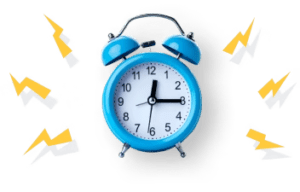Name
Capella University
FPX 6030: MSN Practicum & Capstone
Instructor’s Name
September 26th, 2024
Table of Contents
ToggleProblem Statement (PICOT)
The new policy changes resulting from COVID-19 threaten the quality of care given to the patients as nurses are forced to balance between handling extremely individualized care for affected patients and following intricate measures of infection control. Nurses have been pulling longer shifts, managing more intensely ill patients, and being exposed to scarce resources which are key components to rising burnout rates (Butow et al., 2023). Pre-COVID, nurses were experiencing severe burnout, and this was exacerbated by COVID raising the burnout rates past any statistic. Nurse burnout is not a new phenomenon in the United States but the start of COVID-19 in 2020 compounded the situation. The following PICOT question seeks to address this issue: As to the last dimension of burnout, how does increasing the nurse-to-patient ratio contribute to decreasing burnout in nurses in the period after COVID-19 compared to the height of the pandemic?
- Population: Nurses
- Intervention: Reducing the nurse-to-patient ratio
- Comparison: During COVID-19 versus the post-COVID period
- Outcome: Decreased nurse turnover
- Time: One year
Part 1: Problem Statement
Need Statement
The reason for this move is to help tackle the high levels of fatigue that are evident among nurses due to the increased number of patients that are being attended to due to the COVID-19 pandemic. Its implementation will enable the choice of a particular nursing sample to use in the assessment of the recommended strategy. This will establish whether the given intervention ushers in an enhanced scenario (Duncan et al., 2020). This project will last for one year; hospital administration needs to guarantee that preventing nurse burnout remains an ongoing process for the entire year. Several research has revealed that burnout is particularly harmful to the health of the nurses. They are not able to maintain their usual way of living, do their work effectively, and even stay loyal to the organization and this leads to higher turnover rates.
To this, we can add that it is wise to address this problem as it may lead to a deterioration of the level of care for patients as (Zhou et al., 2021) noted. A study was conducted in several hospitals, that proved each of the nurses faced mild burnout 54 percent during the period considered. Emotional exhaustion rose by 10 percent and had been intensified by 19 percent. Fatigue was identified to cause a 12 percent increase in organizational attrition rate.
Population and Setting
For this project, I will concentrate my study on the nurses in Minnesota. During COVID-19, several hospitals in the state experienced strikes, and post-COVID-19, the Minnesota Nurses Association explained that resource constraints and improvement on nurses’ fatigue levels are critical. Where satisfying the needs of such nurses poses important questions; burnout causes anxiety at work, emotional and physical fatigue, sleeping disorders, and even depression of the nurses (Jones et al., 2021). Others are fatigue which causes a nurse psychologically to run away from attending to the patients. What is understood and established is that burnout diminishes inherent motivation and thinking capacity, which is translated to feelings of compassion fatigue detrimental to the safety of patients. To determine the burnout ratio in this study we shall use personnel working in the long-term care units.
As for the sampling method, adopting the random snowball sampling method, 10 nurses will be selected from each hospital in Minnesota (Sun et al., 2022). The patients in long-term care units are generally severely ill having an average length of stay of about 150 days. Some of the tasks that the administrative helpers perform are; dispensing medicines; washing or bathing the patient; checking on his or her general health; giving terminal patients palliative care; and managing oxygen therapy.
Intervention overview
For the second research question, the following several interventions are available to decrease the level of nurse burnout: Among them, one is to modify the nurse-to-patient ratio. The standard ratios are 1:Two IT staff in critical care and one IT staff for every four or fewer in emergency units. In this project, I will assess nurses based on their performance before and after COVID-19 while applying a 1:2 nurse-to-patient proportion (Kim et al., 2021). Returning to performance, within a year, I will evaluate whether this change is helpful in some way.
The possible cases will be then randomly selected and if they agree, they will be explained about the project to obtain their consent to be part of the sample, the nurses. Subsequently, future follow-ups to the hospital will be made to assess the progress and the improvement that is likely to be observed in line with the recommended areas (Kim et al., 2021). The context of interest will be the long stay wards with the intention of improving the patients’ experience during their stay. Maincare milestones comprise of medication administration, physical environment, physical care, food service, health surveillance, terminal care and respiratory care.
Comparison of Approaches
Another way of adjusting the ratios is that some extra activities, such as exercising, yoga, massage, practicing mindfulness, etc., can be involved with a purpose to fight burnouts among the nurses. They help the nurses to be on top of their work and also deal with very important mental stresse. Even though these interventions take more time in practicing, they are feasible in the targeted nursing population(Kaszuba et al., 2023).There is no constraints in performing them; for example, there are no restrictions on breathing exercises. Meditation equals decreased burnout because it keeps the nurses in the present moment, encourages positive affect and decreases stress.
My next research will take place in a context where the nurse-to-patient ratio intervention will be incorporated with meditation (Ouslander et al., 2020). These combined strategies may prove useful for nurses working in LT care units where many of these professionals can face high-stress levels because of highly workload demans. First, though is improved meditation, stress and burnout will be minimised thus corresponding to improved attention and state of mind of the nurses improving the patient care.
Initial Outcome Draft
The expected benefit of lowering the nurse-to-patient ratio is decrease in burnout level among nurses, which will culminate in better patient care. Fewer staffed nurses are more attentive to patients, and a reduced nurse-to-patient ratio will improve the capacity of the nurses to make sound decisions (Kaszuba et al., 2023). Reducing burnout will advance the general performance of a hospital and eliminate any barriers that can hinder nurse’s ability to handle stress, hence enhancing both; their mode of handling stress, hence both; their psychological and physical functioning. It established that better nurse well-being means more effective attention to patient outcomes and a safer environment for health consumers.
Furthermore, increasing nurse’s well-being decreases burnout, synthesising utility and assets among the nurses, enhancing their satisfaction hence improve on the turnover of hospitals and the eventual costs of staffing. That means that there will be a more stable nursing workforce; this also helps in improving continuity of care to patients (Liu et al., 2023). This in term benefits the patient since happy emotional balanced nurses are more productive in delivering excellent quality patient care. Also, increased positive workplace environment enhances togetherness and unity that are key components in guaranteeing efficient flow of communication throughout the organisation’s delivery of healthcare.
Time Estimate
For the development of this concept, I would take two months for concept design and one month for literature review of the current situation of burnout. When it comes to collecting data on the burnout incidence and effects, this may be the hardest task during this phase. The overall process of the full project implementation will take almost one year (Jones et al., 2021). In the next one year, a comparison between the extend of burnout among the discussed nurses before and after COVID will be made.
The timeline is feasible, within which nurse participants can be chosen, and performance indicators assessed (Kim et al., 2021). During the first month, I will go to hospitals in Minnesota with an aim of collecting data on long term care unit nurses. The next two months will be designated for sampling of the participants. The process of evaluating performance indicators will start from the fourth month of the project. In the forthcoming six months I will continue to gather data and evaluate for spawning and breeding bouts in the form of excel sheets. Perhaps the risks include nurses demotivation and policies hindrances.
Part 2: Literature Review
The effects of burnout have been clearly defined over the years to result in a compromise of patient safety as well as the overall quality of the services offered by the nurse. From the self generated survey, it was carrying out that when nurses are stressed, they are likely to be more careless and commit more mistakes, use fewer words, and are less likely to give emotional support to patients. It also goes a long way in showing that burnout should be among the main areas to fix when seeking to enhance the quality of healthcare (Kaszuba et al., 2023). According to research studies a number of work environment factors that can help reduce burnout consist of sufficient staffing numbers as well as making wellness programs available. Introducing stress reduction programs such as use of mindfulness has been found to be among the practical strategies that have been utilized according to various researches. These interventions are with the view of empowering the nurses decrease stress that is associated with the psychological and physical demands of their careers.
In fact meditation and breathe control along with some other similar techniques including yoga have been found to be quite useful to manage with the stress and professional burn out. They operate on self-caring, managing of emotions and concerns of the present moment to minimize the nurses’ pressure-related experiences (Liu et al., 2023). Researchers have found that through practicing mindfulness on a routine basis, these nurses get reduced levels of emotional exhaustion and better ways of controlling to stress that they encounter in their line of duty. This turns out to be helpful in increasing their morale, and also helping them to be able to treat the patients competently in the sense that they had adequate time in training and they get to learn on new advancements.
Moreover, other studies reveal that the patient-staff ratio is central to worsening burnout (Mitchell et al., 2021). High ratios suggest that a host of patients are admitted to one nurse; considering that it puts a lot of pressure on the nurse, tiring out physically, not to mention emotionally exhausting. Such conditions specifically limit the nurses’ capabilities to provide precise, quality care, and responsible for the deteriorating patient results.
Studies and questionnaire that were conducted during the COVID-19 have also continue to uncover the level of the problem (LeClair et al., 2021). Seventy three percent of the nurses admitted to feeling emotionally exhausted, very anxious and some even traumatised because of the extra demands during the pandemic. As a consequence, the burnout issue pressured numerous nurses into thinking that they wanted to quit the employment as they experienced long hours of working hours with little social support from other employees, ^suboptimal staffing densities and hazardous roles. Combined, these factors to cultivate a hostile work environment where it became almost unbearable to sustain the level of care needed.
Healthcare Policy that Impacts the Approach to Address an Identified Need
The Nurse Staffing Standards for Hospital Patient Safety and Quality Care Act aims to deliver positive patient results as well as positive outcomes in the nurse experiences through safe and clinically feasible nurse staffing ratios. By setting clear guidelines for different care units, such as 1:Including 4:1 in medical/surgical units and 1:1 in intensive care the nurse to patient ratio is part of this policy to lessen the unreasonable workloads that lead to nursing burn out (Lavoie et al., 2022). In this way the nurses are able to get more patient oriented care since the number of workers mean that one nurse is not overworked hence reducing cases of medical negligence hence increasing patient safety.
On the other hand, despite increasing insurance coverage by way of the ACA, there are negative implications of this on hospitals because it essentially meant that there was a greater population of people presenting at hospitals and emergency departments thereby increasing the nurse patient ratio and increasing burnout (Melguizo et al., 2019). Another deliberate plan was the creation of outpatient care units when implementing the ACA to ensure that hospitals shift off additional non-acute patients to other facilities.
NURS FPX 6030 Assessment 2 Conclusion
In general, the reduced level of burnout among nurses, which has been enhanced by the COVID-19 after-effect, is vital in enhancing the clients’ care, not to mention the nurses’ health (Lavoie et al., 2022). This could be done by increasing the staff-patient ratio in the hospital to avoid so much pressure on the nurses and should encourage the provision of health promotion programs such as stress and relaxation. It is for this reason that these approaches can help in enhancing the level of work satisfaction, reducing turnover rates, and enhancing the result of inpatient treatment for those institutions where such legislation as the Nurse Staffing Standards Act.
NURS FPX 6030 Assessment 2 References
Butow, P., Havard, P. E., Butt, Z., Juraskova, I., Sharpe, L., Dhillon, H., Beatty, L., Beale, P., Cigolini, M., Kelly, B., Chan, R. J., Kirsten, L., Best, M. C., & Shaw, J. (2023). Stakeholder perspectives on the impact of COVID-19 on oncology services: A qualitative study. Supportive Care in Cancer: Official Journal of the Multinational Association of Supportive Care in Cancer, 31(8), 491. https://doi.org/10.1007/s00520-023-07916-y
Duncan, E., O’Cathain, A., Rousseau, N., Croot, L., Sworn, K., Turner, K. M., Yardley, L., & Hoddinott, P. (2020). Guidance for reporting intervention development studies in health research (GUIDED): an evidence-based consensus study. BMJ open, 10(4), e033516. https://doi.org/10.1136/bmjopen-2019-033516
Jones, P., Walker, J., Kleinpell, R., George, A., & Norman, L. (2021). Showcasing nursing leadership and contributions to a university’s COVID-19 student contact tracing process. Nursing Administration Quarterly, 45(4), 346–352. https://doi.org/10.1097/NAQ.0000000000000492
Kim, J., & Kim, S. (2021). Nurses’ adaptations in caring for COVID-19 patients: A grounded theory study. International Journal of Environmental Research and Public Health, 18(19), 10141. https://doi.org/10.3390/ijerph181910141
Kaszuba, M., Madej, N., Pilinski, R., & Sliwka, A. (2023). Post-COVID-19 Symptoms in Adults with Asthma-Systematic Review. Biomedicines, 11(8), 2268. https://doi.org/10.3390/biomedicines11082268
Liu, K., Zhang, W., Li, W., Wang, T., & Zheng, Y. (2023). Effectiveness of virtual reality in nursing education: a systematic review and meta-analysis. BMC Medical Education, 23(1), 710. https://doi.org/10.1186/s12909-023-04662-x
LeClair, J., Watts, T., & Zahner, S. (2021). Nursing strategies for environmental justice: A scoping review. Public Health Nursing (Boston, Mass.), 38(2), 296–308. https://doi.org/10.1111/phn.12840
Lavoie, M., Gélinas, C., Aubé, T., Tchouaket, E., Tremblay, D., Gagnon, M. P., & Côté, J. (2022). Influence of caring for COVID-19 patients on nurse’s turnover, work satisfaction, and quality of care. Journal of Nursing Management, 30(1), 33–43. https://doi.org/10.1111/jonm.13462
Melguizo, E., Acosta, A., Gómez, I. P., Manrique, Y., & Hueso, C. (2019). The design and validation of a nursing plan for elderly patients with postoperative delirium. International Journal of Environmental Research and Public Health, 16(22), 4504. https://doi.org/10.3390/ijerph16224504
Mitchell, K. M., Baxter, C. E., Gural, D. M., Chorney, M. A., Simmons-Swinden, J. M., Queau, M. L., & Nayak, N. (2021). Strategies for retention of nursing students: A scoping review. Nurse Education in Practice, 50, 102956. https://doi.org/10.1016/j.nepr.2020.102956
Ouslander, J. G., & Grabowski, D. C. (2020). COVID-19 in nursing homes: Calming the Perfect Storm. Journal of the American Geriatrics Society, 68(10), 2153–2162. https://doi.org/10.1111/jgs.16784
Sun, R., & Budhwani, H. (2022). Negative sentiments toward novel coronavirus (COVID-19) vaccines. Vaccine, 40(48), 6895–6899. https://doi.org/10.1016/j.vaccine.2022.10.037
Zhou, Y., Wang, Y., & Li, Z. (2021). Intention to get vaccinated against COVID-19 among nursing students: A cross-sectional survey. Nurse Education Today, 107, 105152. https://doi.org/10.1016/j.nedt.2021.105152








